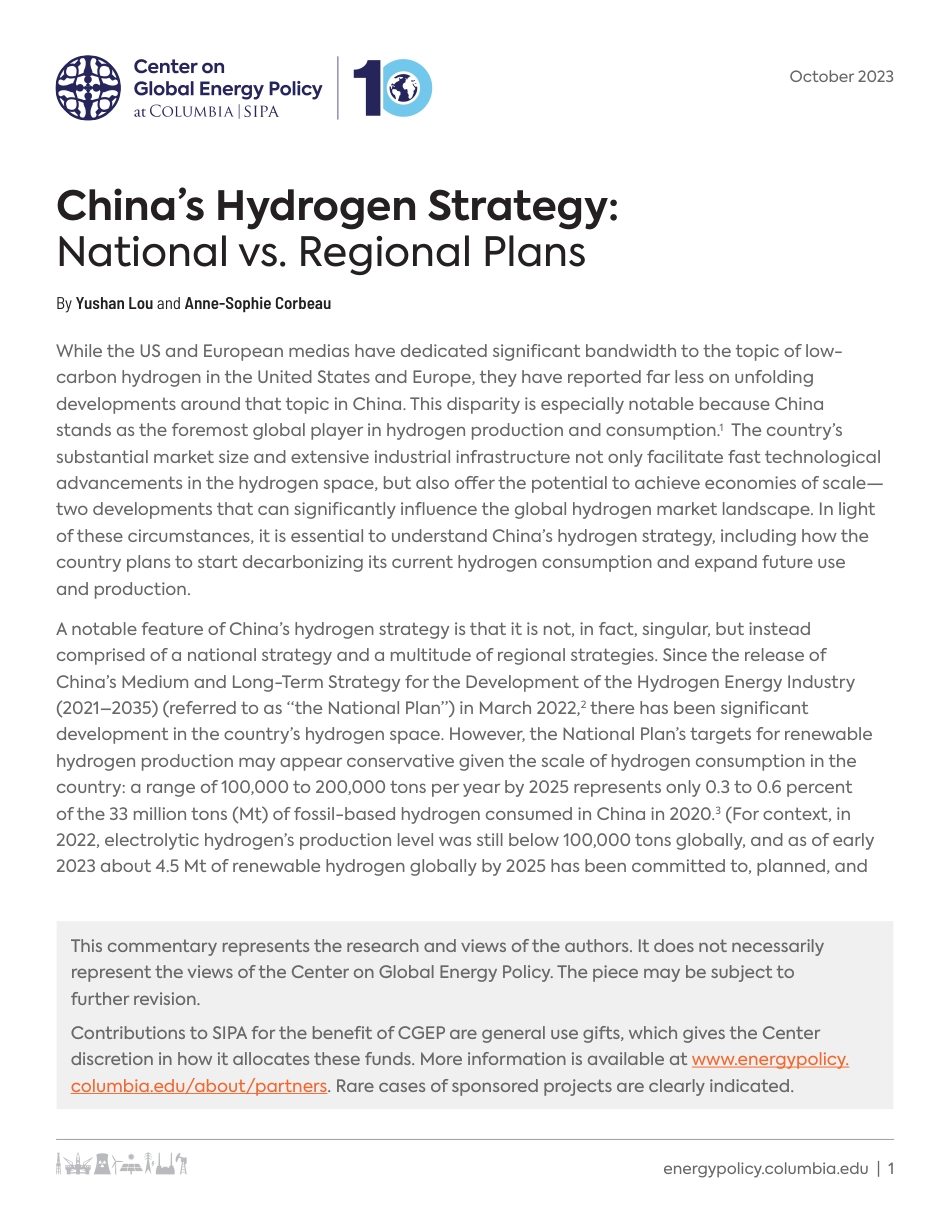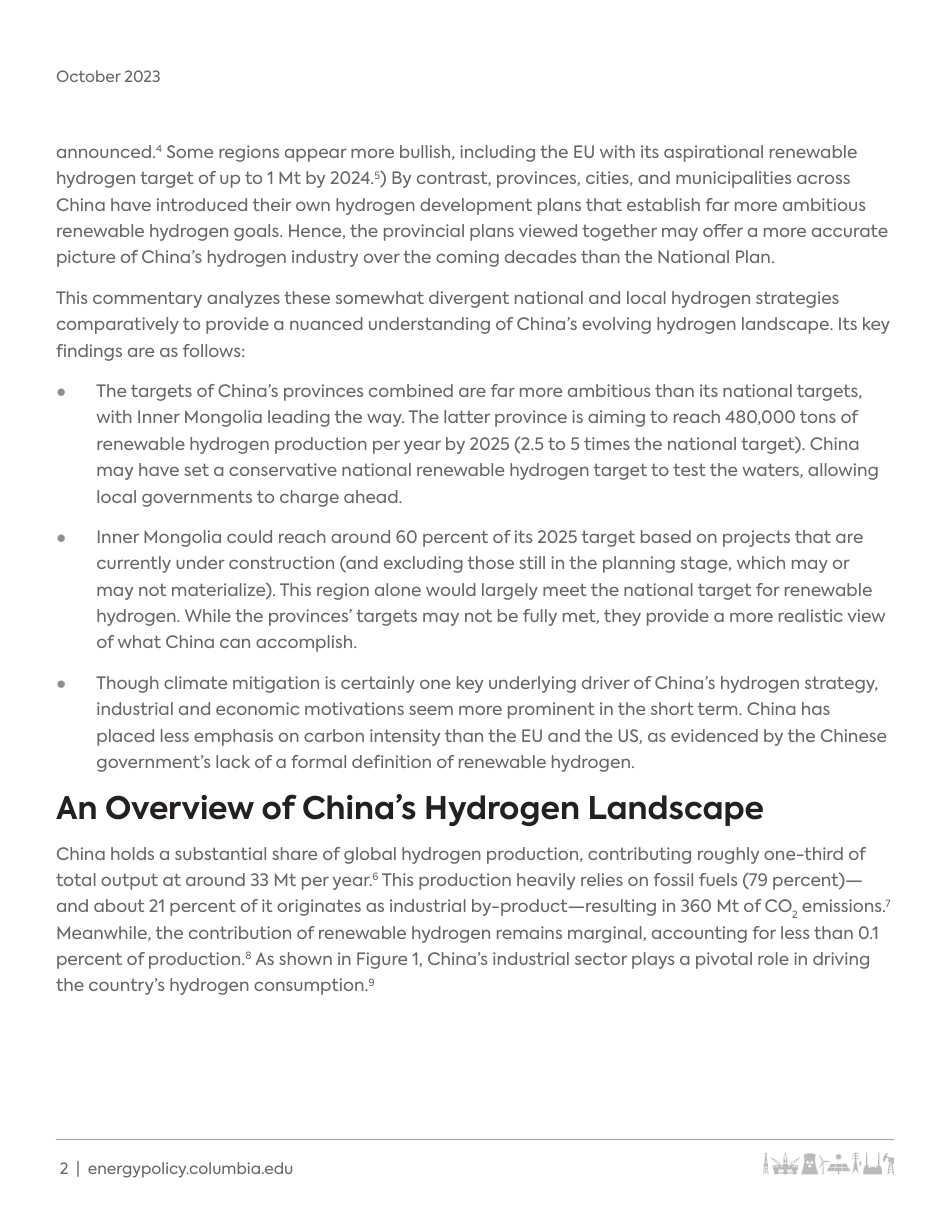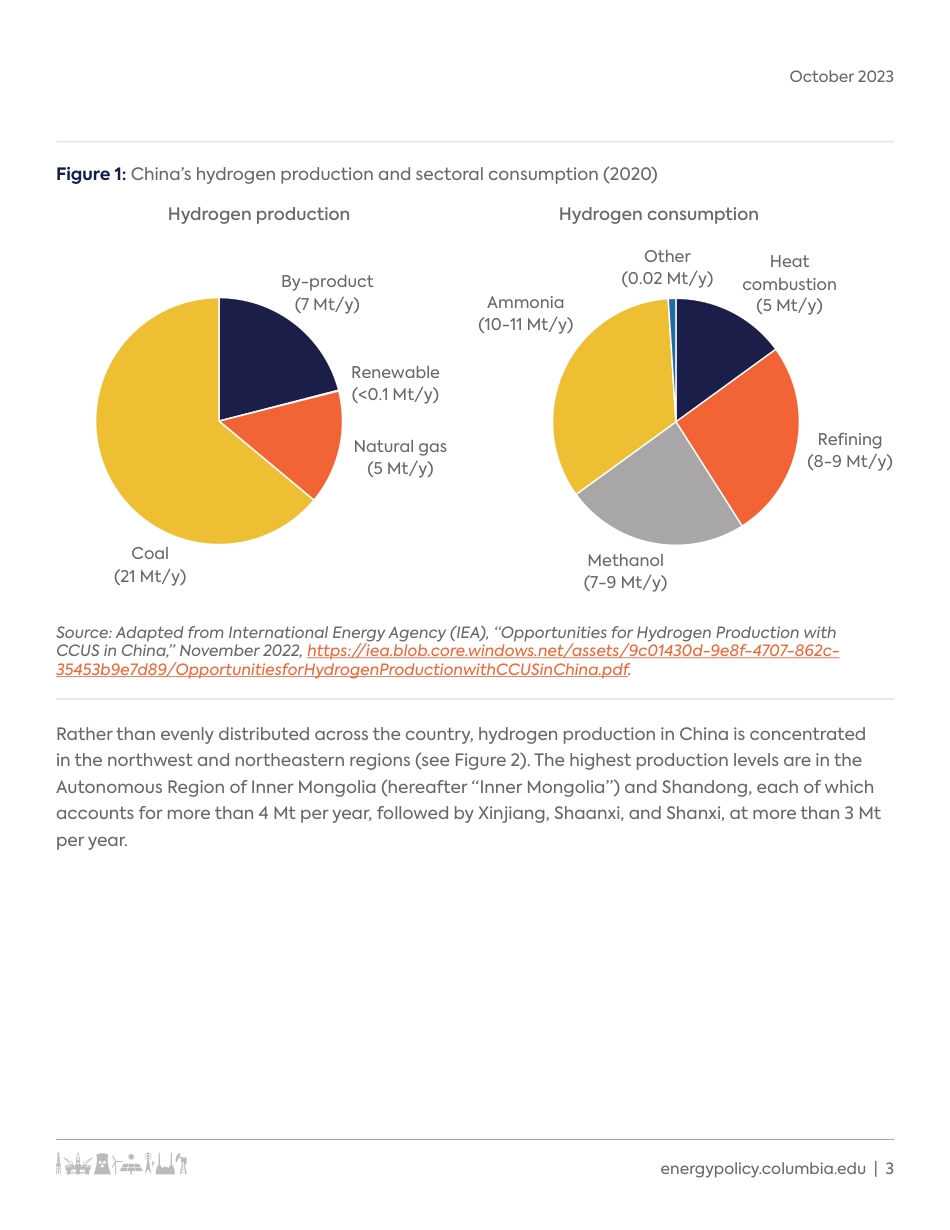energypolicy.columbia.edu|1October2023WhiletheUSandEuropeanmediashavededicatedsignifcantbandwidthtothetopicoflow-carbonhydrogenintheUnitedStatesandEurope,theyhavereportedfarlessonunfoldingdevelopmentsaroundthattopicinChina.ThisdisparityisespeciallynotablebecauseChinastandsastheforemostglobalplayerinhydrogenproductionandconsumption.1Thecountry’ssubstantialmarketsizeandextensiveindustrialinfrastructurenotonlyfacilitatefasttechnologicaladvancementsinthehydrogenspace,butalsooferthepotentialtoachieveeconomiesofscale—twodevelopmentsthatcansignifcantlyinfuencetheglobalhydrogenmarketlandscape.Inlightofthesecircumstances,itisessentialtounderstandChina’shydrogenstrategy,includinghowthecountryplanstostartdecarbonizingitscurrenthydrogenconsumptionandexpandfutureuseandproduction.AnotablefeatureofChina’shydrogenstrategyisthatitisnot,infact,singular,butinsteadcomprisedofanationalstrategyandamultitudeofregionalstrategies.SincethereleaseofChina’sMediumandLong-TermStrategyfortheDevelopmentoftheHydrogenEnergyIndustry(2021–2035)(referredtoas“theNationalPlan”)inMarch2022,2therehasbeensignifcantdevelopmentinthecountry’shydrogenspace.However,theNationalPlan’stargetsforrenewablehydrogenproductionmayappearconservativegiventhescaleofhydrogenconsumptioninthecountry:arangeof100,000to200,000tonsperyearby2025representsonly0.3to0.6percentofthe33milliontons(Mt)offossil-basedhydrogenconsumedinChinain2020.3(Forcontext,in2022,electrolytichydrogen’sproductionlevelwasstillbelow100,000tonsglobally,andasofearly2023about4.5Mtofrenewablehydrogengloballyby2025hasbeencommittedto,planned,andThiscommentaryrepresentstheresearchandviewsoftheauthors.ItdoesnotnecessarilyrepresenttheviewsoftheCenteronGlobalEnergyPolicy.Thepiecemaybesubjecttofurtherrevision.ContributionstoSIPAforthebeneftofCGEParegeneralusegifts,whichgivestheCenterdiscretioninhowitallocatesthesefunds.Moreinformationisavailableatwww.energypolicy.columbia.edu/about/partners.Rarecasesofsponsoredprojectsareclearlyindicated.China’sHydrogenStrategy:Nationalvs.RegionalPlansByYushanLouandAnne-SophieCorbeau2|energypolicy.columbia.eduOctober2023announced.4Someregionsappearmorebullish,includingtheEUwithitsaspirationalrenewablehydrogentargetofupto1Mtby2024.5)Bycontrast,provinces,cities,andmunicipalitiesacrossChinahaveintroducedtheirownhydrogendevelopmentplansthatestablishfarmoreambitiousrenewablehydrogengoals.Hence,theprovincialplansviewedtogethermayoferamoreaccuratepictureofChina’shydrogenindustryoverthecomingdecadesthantheNationalPlan.ThiscommentaryanalyzesthesesomewhatdivergentnationalandlocalhydrogenstrategiescomparativelytoprovideanuancedunderstandingofChina’sevolvinghydrogenlandscape.Itskeyfndingsareasfollows:●ThetargetsofChina’sprovincescombinedarefarmoreambitiousthanitsnationaltargets,withInnerMongolialeadingtheway.Thelatterprovinceisaimingtoreach480,000tonsofrenewablehydrogenproductionperyearby2025(2.5to5timesthenationaltarget).Chinamayhavesetaconservativenationalrenewablehydrogentargettotestthewaters,allowinglocalgovernmentstochargeahead.●InnerMongoliacouldreacharound60percentofits2025targetbasedonprojectsthatarecurrentlyunderconstruction(andexcludingthosestillintheplanningstage,whichmayormaynotmaterialize).Thisregionalonewouldlargelymeetthenationaltargetforrenewablehydrogen.Whiletheprovinces’targetsmaynotbefullymet,theyprovideamorereali...



 VIP
VIP VIP
VIP VIP
VIP VIP
VIP VIP
VIP VIP
VIP VIP
VIP VIP
VIP VIP
VIP VIP
VIP